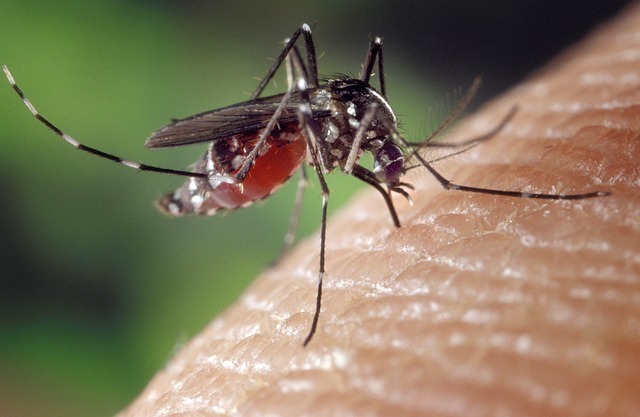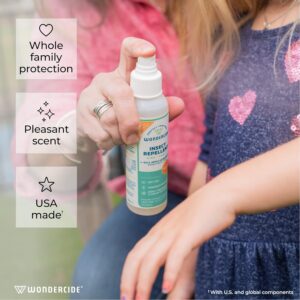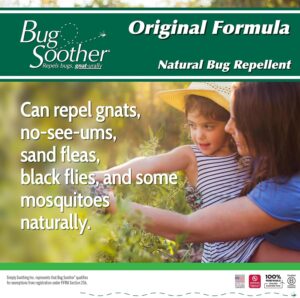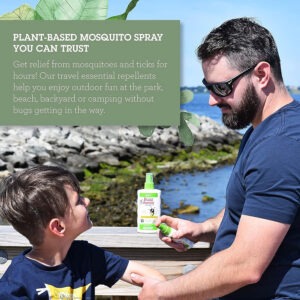After my recent article about how using Woodworm plants can help repel insects from your garden, I’ve been inundated with requests to delve deeper into the world of natural insect repellents. It’s clear that the interest in eco-friendly, sustainable solutions to keep those pesky bugs at bay extends beyond just protecting our plants; it’s also about safeguarding ourselves. So, let’s dive into the fascinating realm of natural insect repellents that promise to offer us relief without the chemical footprint.
The shift towards natural insect repellents is more than just a trend; it’s a response to the growing awareness about the adverse effects synthetic repellents can have on our health and the environment. From causing skin irritations to posing risks to wildlife, the downsides of chemical repellents are prompting many of us to seek out alternatives that are kinder to both our bodies and the planet.
But what makes a substance effective at repelling insects, and can natural ingredients really stand up to the challenge? The answer lies in the unique compounds that many plants produce, which are designed to protect them from insect predation. These same compounds, when harnessed correctly, can offer us a shield against the swarms of mosquitoes, flies, and other unwelcome guests.
In this article, we’ll explore the science behind natural insect repellents, highlight the most effective plant-based solutions, and offer tips on how to use them in your daily life. Whether you’re a seasoned gardener looking to extend your plant-based practices to personal care or someone searching for a safer way to enjoy time outdoors, there’s a natural solution waiting to be discovered. Let’s embark on this journey together, exploring the gifts nature offers to keep us comfortable and bite-free.
What ingredient is the most harmful in insect repellents?
One of the most controversial ingredients historically found in many traditional insect repellents is N,N-Diethyl-meta-toluamide, commonly known as DEET. Developed by the U.S. Army in 1946 for military use and made available to the public in 1957, DEET has been the go-to compound for warding off insects effectively. However, its widespread use has raised significant health and environmental concerns. Research has linked DEET to a range of adverse effects, from skin irritations and rashes in sensitive individuals to more severe neurological impacts, such as seizures, when used in high concentrations or applied improperly. Moreover, the environmental footprint of DEET cannot be overlooked; it has been detected in waterways, where it can affect aquatic life, indicating its persistence and the potential for bioaccumulation. These concerns have fueled the search for safer, natural alternatives that can provide effective protection without the associated risks.
Besides DEET are there any other ingredients that can be harmful in insect repellents?
Beyond DEET, which has been extensively discussed for its potential adverse effects, there are other chemicals commonly found in insect repellents that can be considered toxic, especially with prolonged or improper use. Here are some of the most notable ones:
- Picaridin (also known as Icaridin): Considered safer than DEET by some, Picaridin can still pose risks if used excessively or on sensitive skin. It’s a synthetic compound modeled after the natural compound piperine found in the group of plants used to produce black pepper. While it’s generally viewed as less irritating than DEET, concerns about its long-term environmental impact and potential health effects with excessive exposure persist.
- Permethrin: This is a synthetic chemical that acts as an insecticide, repelling and killing ticks, mosquitoes, and other arthropods. It’s intended for use on clothing, gear, and bed nets rather than direct application to the skin. However, permethrin can be neurotoxic to humans if ingested and is highly toxic to aquatic life, bees, and cats.
- IR3535 (Ethyl butylacetylaminopropionate): A synthetic amino acid, which is structurally similar to naturally occurring amino acids, IR3535 has been used as an insect repellent in Europe for over 30 years and in the U.S. for a shorter time. While considered less toxic than DEET and permethrin, it can cause eye irritation and has unknown long-term effects, with limited studies on its environmental impact.
- Oil of Lemon Eucalyptus (OLE) and PMD (para-menthane-diol): Although derived from the lemon eucalyptus tree and considered “natural,” the concentrated extract (PMD) can cause skin irritation in sensitive individuals. Additionally, it should not be used on children under three years of age due to potential adverse reactions.
- Cyfluthrin and other pyrethroids: Used in some mosquito control products, these synthetic insecticides are similar to the natural pesticide pyrethrin, which is found in chrysanthemums. They can be neurotoxic to humans and are highly toxic to aquatic organisms and bees.
It’s crucial for users to read and follow the instructions on insect repellent products carefully, considering the potential risks and benefits. The quest for safer, effective alternatives has led to increased interest in natural repellent ingredients, such as citronella, geraniol, and neem oil, which have been shown to offer protection against insects with minimal adverse effects on health and the environment.
Here are some more natural products we found with great reviews.

What products are considered safe for insect repellent?
Here are a few we consider safe (and they are in no particular order):
1) Wondercide – Mosquito, Tick, Fly, and Insect Repellent with Natural Essential Oils DEET-Free Plant-Based Bug Spray Killer Safe for Kids, Babies and Family
It comes in a few different scents and can be found on Amazon. CLICK HERE
2) Bug Soother Spray – Natural Insect, Gnat, and Mosquito Repellent & Deterrent – Safe Bug Spray for Adults, Kids, Pets, & Environment – Made in the USA
This has only one scent and can be found on Amazon. CLICK HERE
3) Quantum Health Buzz Away Extreme Insect Repellent DEET Free Cedarwood Lemongrass & Citronella Oil Outdoor Mosquito & Tick Bug Spray
This has only one scent too and can be found on Amazon. CLICK HERE
In navigating the complex landscape of insect repellents, the journey to finding the right solution for you and your family is personal and essential. As we’ve explored, the market offers a wide range of options, from synthetic chemicals with proven efficacy but potential risks, to natural alternatives that promise safety at the potential cost of effectiveness. The key lies in balancing these factors—effectiveness, safety, and environmental impact—according to your specific needs, health concerns, and values.
Remember, the best repellent is one that you will use consistently and correctly. For families, especially those with young children or pregnant women, the decision becomes even more critical. It’s important to consult with healthcare providers when choosing a repellent, particularly for sensitive groups, to ensure that it’s safe and appropriate for use.
Moreover, insect repellent is just one part of a broader strategy to protect against insect-borne diseases. Combining repellents with physical barriers such as long sleeves, pants, and mosquito nets, as well as environmental management practices like eliminating standing water, can significantly reduce the risk of bites.
As we continue to demand safer, more sustainable options, the market is responding with innovative solutions that are both effective and have a minimal environmental footprint. By staying informed and making conscious choices, we can protect ourselves and our loved ones from the nuisance and dangers of insect bites, without compromising our health or the planet.
Ultimately, the journey to find the right insect repellent is a testament to our collective effort to live harmoniously within our environment, respecting the delicate balance of nature while safeguarding our well-being. Let’s embrace this challenge with knowledge, caution, and a commitment to choosing what’s best for our health and the world around us.
*I am an Amazon Associate and may receive a small commission.















